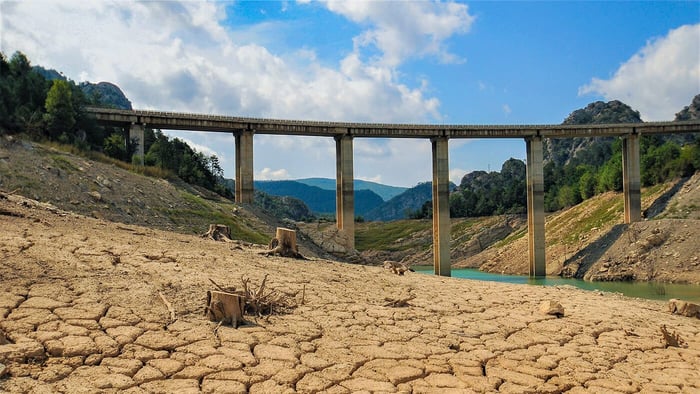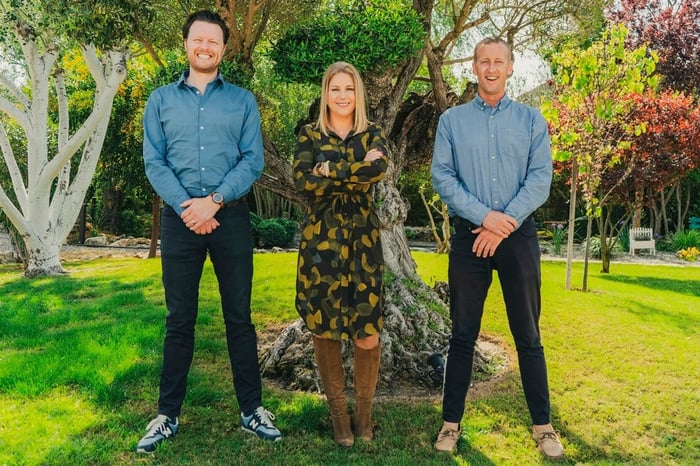Table of Contents
- The Grim Reality of the Current Water Supply
- Rainfall in Andalusia
- The realities of water supply in rural areas
- Financial Responsibilities for Wastewater Solutions
- Boreholes - Impacts on Countryside Properties
- Can you drink the water in southern Spain?
- Alternative Water Solution for Properties without Mains Water or Wells
- Due Diligence
As experts in the sale of Spanish countryside properties, we often find ourselves addressing a pressing concern from prospective buyers: How dire is the water situation in Spain?
Given the ongoing water challenges, particularly in the southern region of Andalusia, it's high time we delve into this topic.
My family have always called the countryside home. With a legacy rooted in the landscaping business, my dad and brother have spent years designing gardens that thrive on a delicate balance of nature and water resources. Their experience brings a unique perspective to our understanding of the current water crisis plaguing Southern Spain.
The Grim Reality of the Current Water Supply
As we stepped into 2024, the situation was stark. At the beginning of the year, Andalusia's reservoirs were operating at a mere 21% of their total capacity, resulting in an unprecedented water crisis. The provinces of Huelva, Cadiz, and Malaga, which are home to a significant portion of the population, were under exceptional drought conditions. This situation not only threatened the agricultural backbone of the region but also raised serious considerations for those wishing to invest in rural country properties.
Meanwhile… Plans for a 'water supply highway' along the Costa del Sol remain a top priority, the initiative to establish a 'water highway' along the Costa del Sol, aimed at efficiently transporting water to regions in need during drought conditions, remains a top priority. Matilde Mancha, head of Acosol – the primary water supply company for the region – shared insights with a local newspaper regarding the company's strategic plans for water management, which are poised to significantly benefit Malaga province and the broader Andalusian community. Acosol, a publicly owned entity, provides water services for the 11 municipalities situated on the western Costa del Sol.
Mancha envisions a comprehensive 'water supply highway' that will connect a proposed new reservoir in the Campo de Gibraltar region to La Viñuela in the Axarquía, stretching from west to east. (source: Sur in English)
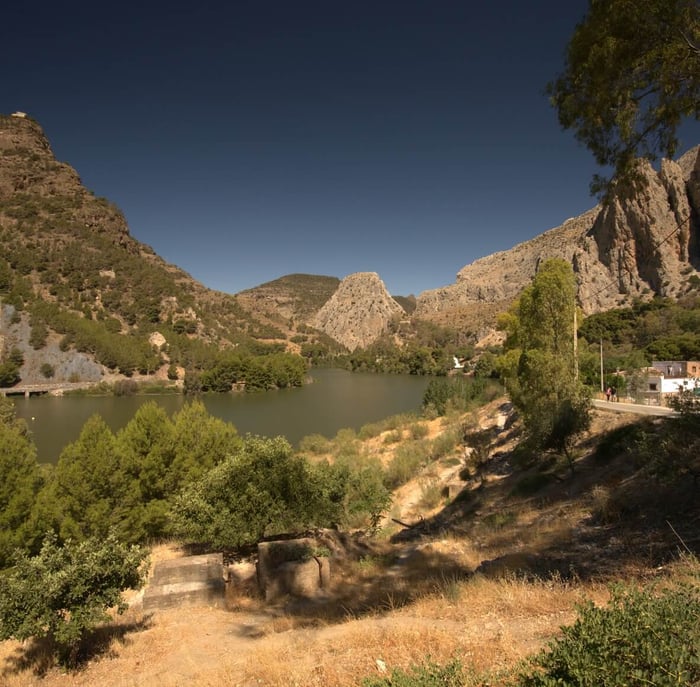 Image El Chorro Lakes
Image El Chorro LakesRainfall in Andalusia
The overall climate features mild winters, dry summers, and more than 300 days of sunshine annually, making it an attractive destination for travellers and residents alike.
Throughout the year, average temperatures in Andalusia hover around 18°C, with monthly variations that reflect the region’s seasonal changes. January marks the coldest month, with average temperatures of 13°C and around 13 mm of rainfall. As the months progress, temperatures gradually rise, peaking in July and August at around 27°C, during which the region experiences virtually no rainfall—July stands out as the driest month, boasting an average of 0 mm of rain.
The transition from summer to autumn sees a slight increase in precipitation, particularly in the later months of the year. Notably, December emerges as the rainiest month, accumulating about 28 mm of rain over an average of 7 rainy days. Following December, the early winter months, including January and February, continue to receive modest amounts of rainfall, while the spring months (March to May) generally feature light showers.
Overall, the average monthly rainfall in Andalusia reflects the region's distinct seasonal changes. Winter months see moderate precipitation, while summers remain largely dry, with the bulk of rainfall concentrated in the latter part of the year. This pattern highlights Andalusia's unique climatic conditions, where long, sunny days prevail, particularly during the summer, while still allowing for seasonal replenishment through winter rains.
Climate graph / Weather by Month Málaga

Average temperature by month Málaga
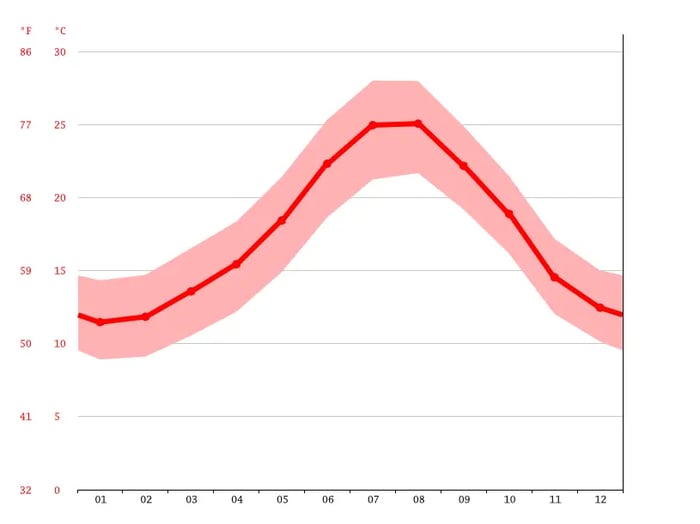
(Graph Source: Climate-Data.ORG)
The realities of water supply in rural areas
Many properties located in remote or rural settings simply cannot connect to the mains water supply due to the distances involved or the high costs associated with extending water networks into less populated regions. Therefore, if you are contemplating purchasing a property in a remote area, you must prepare for alternative water sources.
These may include stored rainwater, private wells, or boreholes, which can provide your household with the necessary water for daily living.
A rural property may, in some fortunate circumstances, have access to mains water. However, there are certain obligations and regulations associated with this situation that are crucial to understand.
Legal wastewater management requirements If you do find a countryside property with access to mains water, it’s vital to note that you must also have the legal means in place to manage wastewater. This is where the distinction between acceptable and outdated systems becomes crucial.
No More Pozo Negro: Traditional waste disposal systems, such as the old established Pozo negro—which functions as a cesspit—are no longer compliant with modern environmental laws in Spain. These pits collect waste but do not treat it, posing significant health and environmental risks. They can lead to the contamination of local soil and water supplies and are thus deemed inadequate for contemporary living conditions.
Sewage Systems vs. Septic Tanks: If a property is connected to mains water, you will typically need to have either:
A Municipal Sewage System: Connecting your property to the town's sewage network is the ideal scenario. A central facility collects and treats waste in this case, ensuring a more sanitary and environmentally friendly disposal process.
Installing a compliant septic tank system is necessary if the property lacks connection to the municipal sewage line. A septic tank collects and treats waste on-site. This solution requires careful planning and maintenance, including regular pumping to remove sludge and ensure its efficiency.
Financial Responsibilities for Wastewater Solutions
Investing in the appropriate wastewater management system can be a significant additional cost to consider when purchasing a rural property. If the existing system is outdated or non-compliant, you are liable for the expenses related to either connecting to a municipal sewage network or installing a new septic tank.
Cost of Installation: Installing a septic tank can range significantly based on factors like size, type, and local regulations. Homeowners should budget not only for the system installation but also for ongoing maintenance, such as periodic pumping and inspections. Depending on the complexity, costs can rise to several thousand euros.
Permits and Regulations: Before installation, obtaining the necessary permits from local authorities is essential. The regulations can vary significantly between regions, so working closely with local officials or real estate experts will help ensure compliance with all legal requirements.
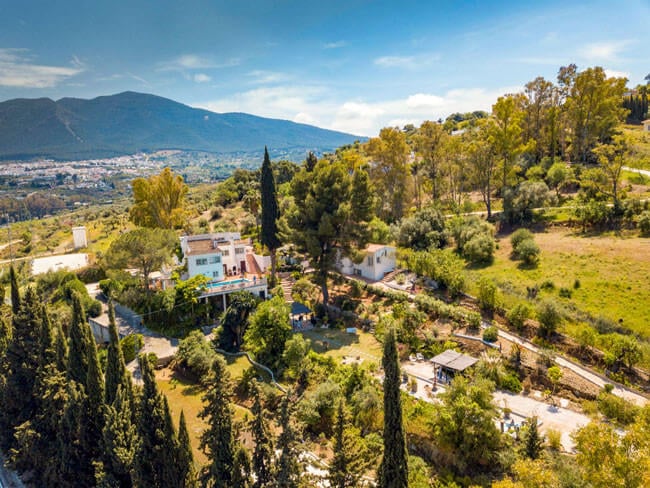
Countryside Finca
Boreholes - Impacts on Countryside Properties
For countryside properties in Spain, particularly those involved in agriculture or rural tourism, having a borehole can be an invaluable resource. It can significantly reduce water costs, provide a reliable water supply for irrigation, and improve the overall sustainability of the property. However, potential buyers should conduct due diligence before investing in properties with existing boreholes. Investigating the borehole’s legal status, understanding the local water regulations, and assessing the water quality are all critical steps.
In conclusion, while boreholes can offer a practical solution to water supply challenges in the Spanish countryside, they come with a set of legal and environmental responsibilities.
Property owners must navigate these complexities to ensure that their water use complies with national laws while also promoting sustainable practices. Given the importance of water as a resource, a thoughtful approach to borehole drilling will not only benefit individual property owners but will also contribute to the broader goal of conserving Spain's vital water resources.
Boreholes are increasingly becoming a sought-after water source for countryside properties in Spain, particularly in rural areas where access to municipal water supplies may be limited.
Understanding the sources of borehole water, the implications of drilling, and the legalities that surround these practices is fundamental for property owners.
The Zahorí: A Water Diviner's Role
For those deep in the rural landscape, you may encounter a fascinating figure known as a Zahorí, or water diviner. This person is believed to possess an uncanny ability to locate hidden water sources. We are fortunate to have Zahorí on our team, a talented individual who can not only find underground water but also assess its depth and sustainability. His expertise can determine whether the water source is a reliable stream or a temporary accumulation, which can drastically affect the long-term viability of the property.
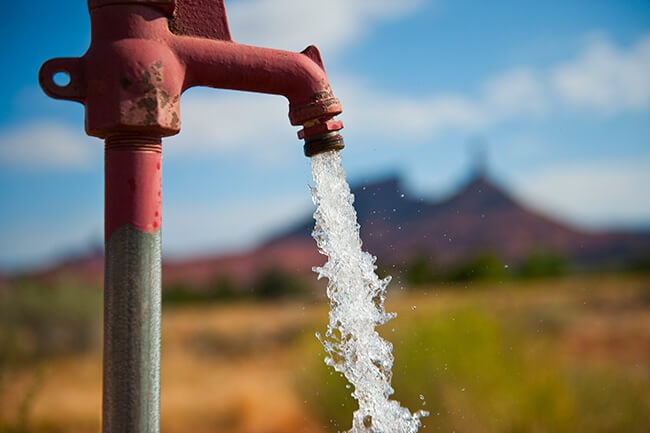
Sources of Borehole Water
The natural hydrological cycle primarily sources borehole water. Rainfall that falls on the land percolates through soil and rock layers, eventually reaching underground aquifers. Aquifers are geological formations that can store and transmit water, and they play a critical role in supplying boreholes. The composition of these layers—whether they consist of sand, gravel, rock, or clay—can significantly impact water quality and its availability. For instance, aquifers made up of permeable rock may allow for easier access to cleaner water, while clay-rich layers may hinder water flow and quality.
When considering drilling a borehole, it’s essential to conduct comprehensive geological assessments to identify the underlying stratigraphy. This not only helps determine the feasibility of acquiring water but also predicts potential issues such as contamination risks from nearby agricultural or industrial activities. A thorough understanding of local hydrology will help prospective drillers ensure that their borehole is sustainable and environmentally responsible.
Legalities Surrounding Boreholes in Spain
Permits and Authorisation
Before any drilling begins, it’s essential to secure the necessary permits from the Confederación Hidrográfica, Spain’s regional water authorities. This requirement applies to both new wells and for properties with existing but unregistered wells, especially for those meant to supply potable water.
Obtaining permission can involve submitting detailed information about the intended use of the well (agricultural, residential, or industrial), the estimated depth, and proximity to any other water sources.
Geological Survey and Environmental Impact
In most cases, applicants must conduct a geological survey to demonstrate that the drilling won’t negatively impact the surrounding groundwater supplies. Environmental impact assessments are also sometimes required to ensure that the project doesn’t compromise water quality or availability in nearby areas. In regions with low groundwater levels or high demand on aquifers, this is especially crucial.
Distance Requirements and Location Restrictions
To protect water quality, the location of a well must comply with certain distance requirements from sources of potential contamination, such as septic tanks, sewage facilities, or industrial sites. While the exact distances may differ depending on the region, it is generally required to place wells at least 25 to 50 meters away from these sources.
Registration and documentation
The regional water authority must register a drilled well.
Registration involves documenting the well’s specifications—depth, diameter, location, and volume of water extracted—ensuring that it meets legal standards for its designated purpose. Registering also enables authorities to monitor water extraction, which is especially critical in areas experiencing water shortages.
Failing to register a well can result in significant penalties, including fines and potential closure of the well. However, unregistered wells are still common, especially in rural areas, as many wells were built before registration became a legal requirement.
Extraction Limits and Usage Reporting
Spanish law also sets limits on water extraction based on the well’s intended use, especially for agricultural wells, which generally consume more water. For larger wells, especially those that might affect local water tables, users are sometimes required to report their annual extraction rates to regional authorities.
Consideration of water rights and their legal implications
In Spain, water resources are generally considered a public good and fall under state jurisdiction. Property owners may construct wells on their land, but the water they access is technically a shared resource. Therefore, extracting excessive amounts without authorization can lead to legal issues, as overusing groundwater could infringe upon water rights for nearby communities.
Non-Compliance and Penalties
Ignoring legal requirements for well construction can result in serious repercussions. For unpermitted wells, penalties range from fines to forced closure or even removal of the well. Additionally, if unauthorized extraction leads to a significant depletion of local water resources, offenders may face legal action from the affected community or municipality.
Regional variances and enforcement
Finally, it’s important to note that the legal requirements and enforcement practices can vary significantly across Spain’s autonomous regions. In areas where water scarcity is a more pressing issue, such as Andalusia, authorities tend to have stricter enforcement protocols and are more vigilant with inspections and penalties.
Costs and permissions for boreholes
If you find yourself in a position where drilling a borehole becomes necessary, several factors come into play, particularly financial ones. The cost to drill a borehole, including the pump and necessary equipment, can range around €000000, depending on the depth required. However, in certain areas, it is possible to find reliable borehole systems for around €00000, ensuring a dependable water supply for your new home.
Can you drink the water in southern Spain?
Here we offer an expanded overview of the topic that addresses both the safety and considerations surrounding drinking water in the region:
Safety of Tap Water:
Yes, you can drink tap water in the South of Spain as long as it comes from the public supply network. The Spanish Agency for Food Safety and Nutrition (Agencia española de Consumo, Seguridad alimentaria y Nutrición), along with various international water quality standards, deems most public tap water safe for human consumption. This means that for most of the population, drinking water from the tap poses minimal health risks.
Water Quality Monitoring:
Spanish authorities regularly monitor water quality to ensure it meets strict health and safety regulations. Spanish authorities treat and test the water for harmful contaminants like bacteria, heavy metals, and pesticides, ensuring the water supply remains safe for public use.
Common Concerns: Taste and Odour
Chlorination: Many municipalities use chlorine to disinfect water, which can leave a noticeable taste and odour. While this is entirely safe, some people may choose to filter the water or use a water purification system to improve the taste.
Mineral Content: In certain rural areas, the mineral content of the water can vary. Depending on the local geology, some people may find the taste of water from specific regions unfamiliar to them.
Microplastics: Global studies have indicated the presence of microplastics in water supplies. While research is ongoing, it’s important to note that the levels detected are generally considered low and not an immediate health risk. However, consumers who are concerned about microplastics might opt for bottled water or advanced filtration systems.
Local pipeline issues: In older buildings or rural homes, local plumbing may not always maintain the same standards as public water supplies. Lead pipes or contamination from ageing infrastructure can occur. Homeowners should consider testing their water, particularly in properties that have not undergone recent updates or renovations.
Bottled Water Preference: Due to taste preferences or concerns about the local water quality, many residents and tourists in southern Spain choose bottled water. This is especially common in more remote areas where the water supply may not be as rigorously monitored.
Recommendations for prospective buyers: Assess Local Water Quality: If considering a property, enquire about the local water quality. Many municipalities provide annual reports on water quality, which can be a valuable resource.
Water Testing: For added peace of mind, especially in older homes, consider testing the water independently.
Filters and purifiers: If taste or odour are concerns, investing in a quality water filter or purifier can improve the drinking experience.
Embrace Local Bottled Water: If tap water is unsuitable, exploring local bottled water brands can be a simple and effective alternative.
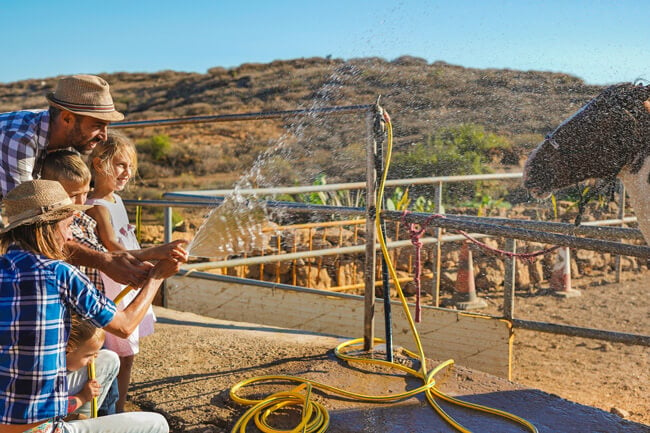
Summary of Well Drilling and Legal Requirements in Southern Spain
Spain's critical water situation has tightened regulations for drilling wells, particularly in the drought-affected south. Many property owners are unaware of the legal requirements, and drilling without permission carries steep fines. Here’s a breakdown of the necessary steps and costs for those considering a well on their property:
1. Initial Feasibility Check:
- Before any drilling, consult a specialized company to assess if drilling a well is possible for your location.
- Cost: Approx. €150.
- Recommendation: Several companies based in southern Spain can provide this service. They will evaluate the property and review simple documentation to determine feasibility.
2. Required Permissions:
- Drilling Authorization: Needed to legally drill the well.
- Water Extraction Permit: Issued by the Junta de Andalucía, allowing water to be extracted after the well is drilled.
- Processing time for these permits can range from six months to a year (on average), and total documentation costs around €1,000.
3. Finding Water Sources:
- Local specialists, often referred to as zahuríes or dowsers, use tools and personal sensitivity to detect underground water sources and estimate depth.
- Cost: Approx. €200 for an assessment.
- We have contacts for reputable local zahuríes.
4. Drilling Process and Costs:
- After obtaining drilling permission, hire a certified drilling company.
- Cost: Around €58 per meter drilled, typically using plastic piping for the well construction.
By following these steps and securing the necessary permits, property owners can ensure compliance and avoid legal issues while securing water resources.
The map displayed outlines three distinct zones that determine the feasibility of drilling a well:
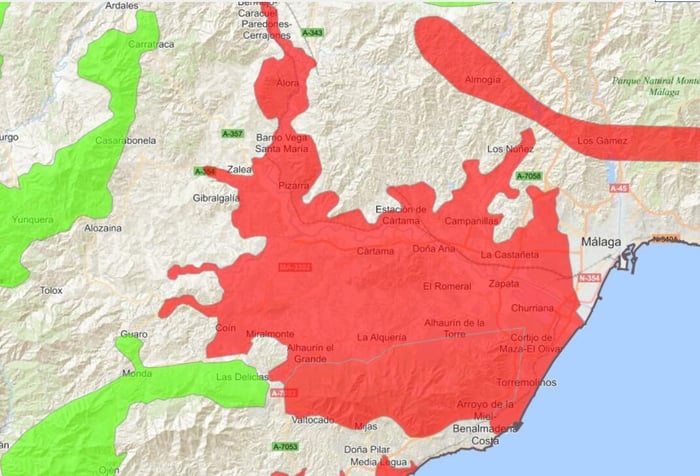 Areas around Malaga that are suitable for drilling a well
Areas around Malaga that are suitable for drilling a wellLegend
1. Red Zone: No well drilling permitted for either residential or agricultural use.
2. Green Zone: Well drilling is allowed.
3. Unmarked Areas: These regions require evaluation by a specialized company to determine well-drilling eligibility. In this specific area, one of the key requirements for well drilling is maintaining a minimum distance from existing wells. Depending on the exact location, any new well must be drilled at least 50, and in some cases, up to 100 meters away from the nearest neighbouring well.
Specific regulations apply to all areas, including a minimum required distance of either 50 or 100 meters from any existing well, riverbed or stream, depending on the property's location. Additional criteria may also be considered based on local guidelines.
Alternative Water Solution for Properties without Mains Water or Wells
If a property lacks mains water access and cannot legally have a well drilled, the primary alternative is to use water delivery services. In this arrangement:
- Water Truck Delivery: Several local companies deliver water, with charges covering only transport costs, as the water itself is free.
- Cost: Transport fees for approximately 10,000 litres range from €90 to €130, depending on the provider.
This option ensures a reliable water supply for properties where well drilling is not feasible. We can provide contacts for trusted water delivery companies serving the area.
Due Diligence
Conducting thorough due diligence regarding water supply and wastewater management is non-negotiable for anyone considering buying a property in rural Spain. If you are unsure about the existing systems, it's advisable to consult with local experts, including plumbers, environmental engineers, and real estate professionals who specialise in rural properties.
In conclusion, the water crisis facing Southern Spain presents both challenges and opportunities for prospective country homebuyers. As experts at Mediterranean Homes, we recognise the critical importance of understanding the complexities surrounding water supply and wastewater management in this stunning yet vulnerable region. The realities of low reservoir levels, the necessity of alternative water sources, and the rigorous legal frameworks governing borehole drilling and wastewater systems require careful consideration.
For anyone looking to invest in the Andalusian countryside, it is essential to approach this endeavour with informed diligence. Engaging with local experts—be it environmental engineers, hydrologists, or seasoned real estate professionals—can provide invaluable insights that will ultimately safeguard your investment and ensure compliance with regulatory requirements. Our team, bolstered by unique expertise, including that of our skilled Zahorí, stands ready to guide you through these intricate waters.
By taking a proactive approach, understanding legal obligations, and putting sustainability at the forefront of your property considerations, you can navigate this water crisis with confidence. The beauty of rural Spain, complemented by a lifestyle enriched by nature, history, and culture, awaits. With the right planning and awareness, your dream of owning a Mediterranean home can indeed become a reality, even amidst the challenges posed by water scarcity.
As you embark on this journey, remember that a thoughtful and informed approach will not only lead you to a beautiful property but also contribute positively to the sustainability and health of the local environment you wish to call home.

